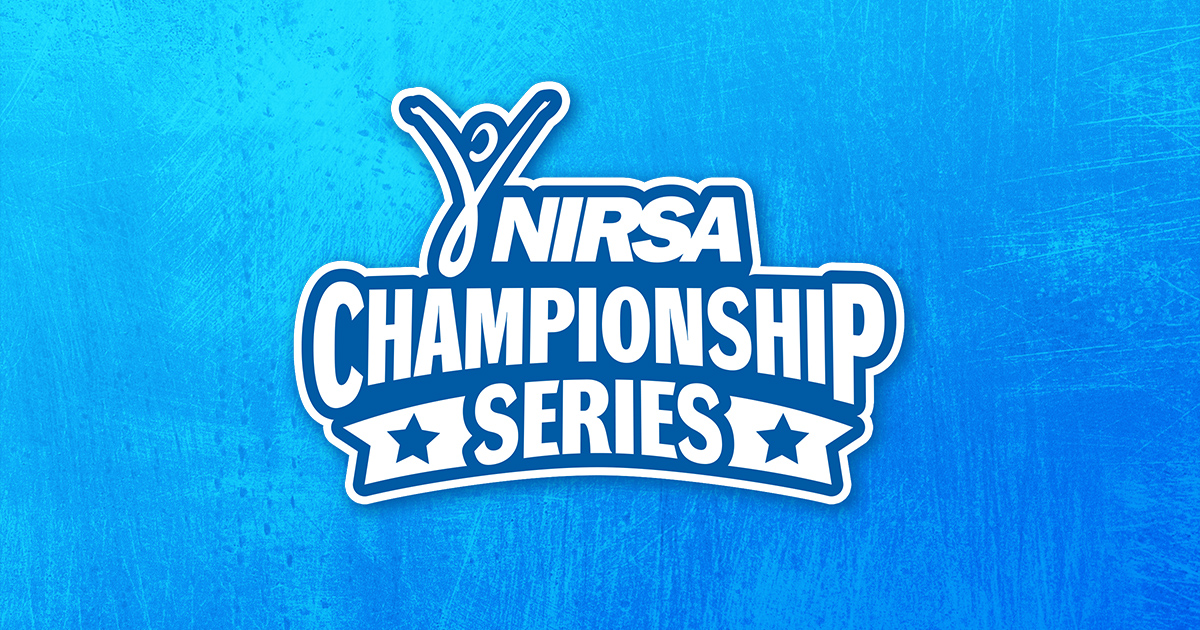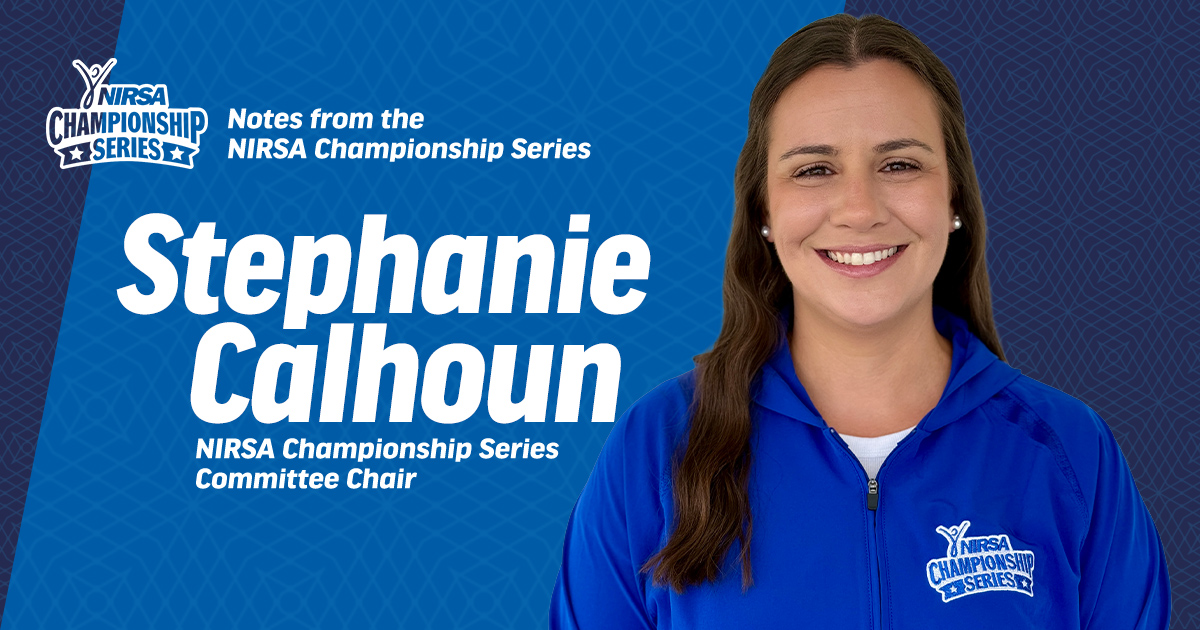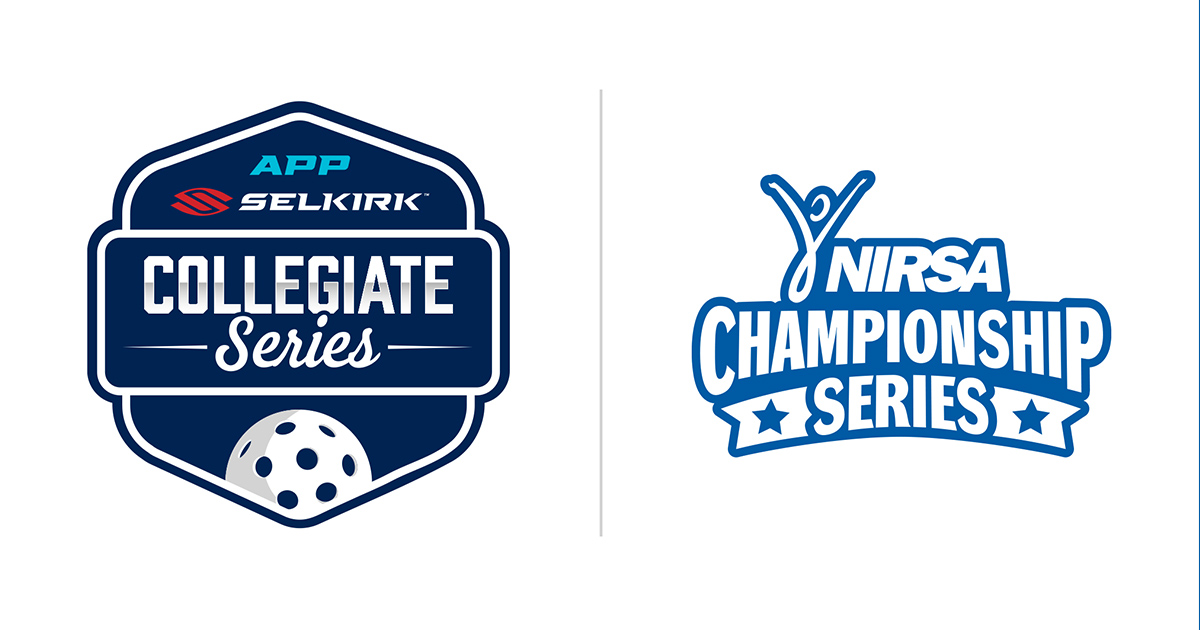To do something well is no small feat. To do something well for 25 years is nothing less than astounding. The NIRSA National Soccer Championships began its journey back in 1994 which also coincided with the United States not only hosting the World Cup, but also progressing to the round of 16. This level of success ignited the fires of excitement and heightened the awareness of the sport. The timing could not have been any more impeccable to begin the NIRSA National Soccer Championships. With the help and passion of NIRSA volunteers and participants, the Championships arose from its humble beginnings to the premier event it is today. The 25th tournament will take place from November 29 through December 1 at the Foley Tourism Complex in Foley, Alabama and will be hosted by the City of Foley. Members in the area are invited to stop by and see the action!
Filling a need
Prior to the beginning of the National Soccer Championships, the multitude of soccer tournaments that club participants attended boasted the same characteristics. They were run by entities with no affiliation to collegiate programs, and they lacked the understanding of club needs. There was little to no consideration for women’s club teams, making it harder for those teams to find organized tourneys. A lack of serious and positive competitive atmosphere added to a “party” culture, where teams concentrated more on activities outside the pitch versus inside. These tournaments made minimal effort and sought maximum profit.
NIRSA Executive Director Will Holsberry served as the soccer committee chair as well during this time and he knew that the membership of NIRSA could create a championship tournament that would rival and surpass the competition offered. It would focus on high-level play for collegiate club players—something that would be taken seriously off the pitch. It would be inclusive to women’s club competition, giving those teams an equal platform to participate. It would be programmed and managed by NIRSA professionals, offering opportunities for professional development with emphasis on the participant experience for staff and officials. Director Holsberry’s vision would be realized as the beginnings of the national tournament took shape with the blessing of NIRSA in 1994.
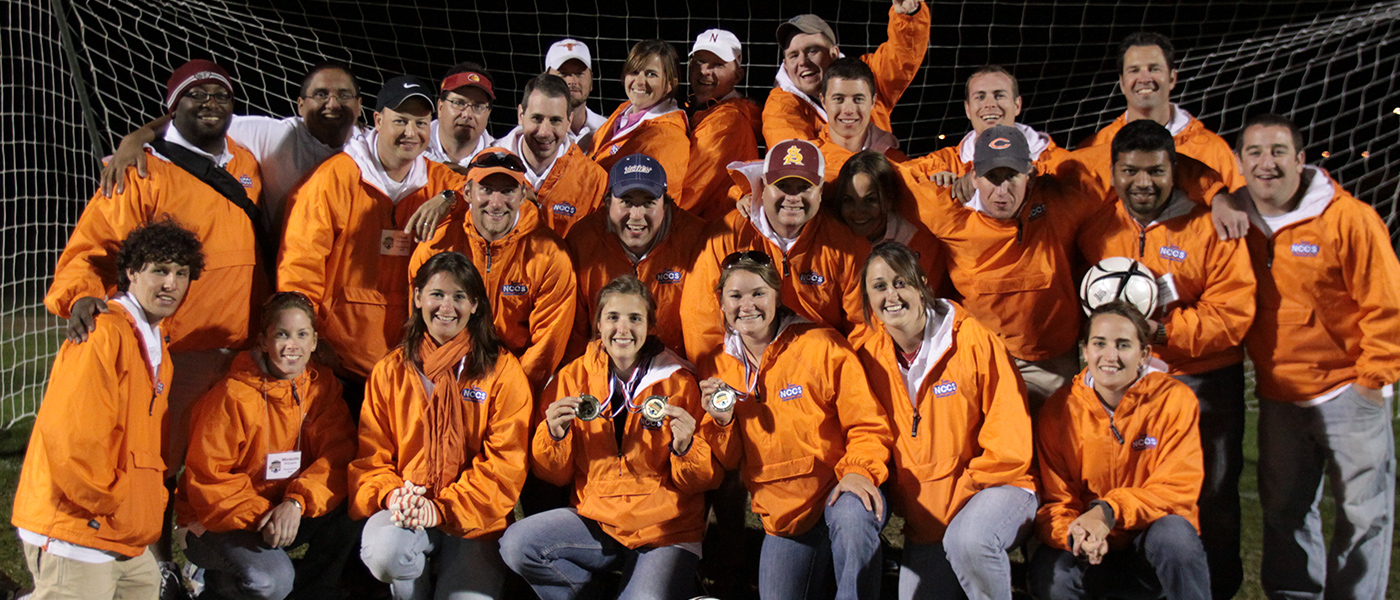
Putting the ball in play
In the beginning, members of the national soccer tournament staff thought that teams would leap at the chance to participate in a tournament conducted by NIRSA professionals. After all, campus recreation professionals run programs like this for a living. However, the first national tournament—which was held at The University of Texas at Austin—only drew a total of 15 teams. That equated to about 250 participants. Members of the committee cold called teams, looking to add to the inaugural tournament. Pulling teams from other established tournaments was challenging, and keeping them with high-quality service was even more so. What felt like an inauspicious start to the national tournament would eventually be rewarded, as the tournament has grown into a massive event hosting close to 100 teams constantly for the last five years.
The success of the tournament can be attributed to the early commitment of the national staff. Individuals like Howard Taylor of Wichita State University, Randall Ford of The University of Texas at Austin, Doug Ewing of Fort Lewis College, and Noah Yannie laid the foundation for today’s event through trial and error, incorporating feedback from teams and volunteers, and learning from each other’s knowledge and strengths. They all helped build relationships with club teams, venues, volunteers, and officials and their diligence, personalities, and passion for the national tournament helped promote the culture that is now prevalent and synonymous with the championship.
“It was a small showing that first year,” Howard recalls, “but a good start. It was particularly hard to get men’s teams, to convince them to move away from this other, more established tournament. The women’s caliber, though, was very good from the start. A few key schools stood out that first year—one being Purdue, where director Carol Stickel insisted they come to this NIRSA event. They were one of the top teams in the country, so her commitment to NIRSA, and her belief that this would be a positive event, representing NIRSA’s principles and values, was huge.”
The new generation of administrators
As with all successful programs, there are always opportunities for new individuals to take on the mantle of their predecessors. Often, these new administrators have been mentored while being allowed to add their own fresh perspective to help grow the organization. This results in an understanding of, and nod toward, the past and respect for what has brought the organization to this point. It also means openings for new ideas, development, and direction to future success. After many years of mentorship and involvement at the national tournament, the opportunity to lead at the forefront can present itself. Let’s meet four individuals who have recently moved to that forefront and taken on that responsibility at the national tournament. We’ll get a glimpse into their views of the current state of the national soccer championships and the potential they see in the tournament.
- Laura Thomas, Assistant Director of Competitive Sports, University of Alabama
Role with the National Tournament: NIRSA Championship Series Soccer Workteam Chair & Result Team Lead - Erik Jaeke, Associate Director of Programs, University of Wisconsin-Madison
Role with the National Tournament: Director of Officials - Danny Feitel, Associate Director of Recreation, University of California, Merced
Role with the National Tournament: Co-Director of Competition - Chris McAlpine, Assistant Director of Student Development & Marketing, The University of Texas at Dallas
Role with the National Tournament: Co-Director of Competition
The feeder system—NIRSA regional soccer
As the national tournament has grown, so has the sport within NIRSA itself. With this growth, a regional system has been necessary in order to assist with national rankings as well as championship and open tournament seedings and eligibility. Regional tournaments did not start under the NIRSA umbrella though. Outside entities have had a hand in running the regional tournaments. Just how far have the NIRSA regional soccer tournaments come over the years?
Chris McAlpine: We set off a couple of years ago as a soccer community to get [the regionals] all on the same playing field and try to make them as uniform as possible. I’d say in the last three years that we have seen some major growth in that area. They used to be run by people not affiliated with NIRSA institutions, and now we have NIRSA representation at each and every one of our regionals, including the regional coordinators being involved. The level of seriousness has grown with these regionals. In 2006, I helped host the Region IV tournament in San Marcos, Texas, and it is nothing like it is now. It’s not that the tournament was bad in any way, it’s that the “officialness” of the tournaments has grown since then. The level of competition [at regionals] has grown as well. Students are looking for an outlet to participate and compete, and the drive to compete has grown—as well as the talent level.
Policing the pitch—officials at nationals
The NIRSA National Soccer Championships is unique compared to other NIRSA Championship sports in that student officials are not utilized in its model. This was intentional as the opportunity to use non-student officials presented itself early in the life of the championships. With an eye toward student official development, however, changes are being made. How has the officials’ piece been changing for the national tournament?
Erik Jaeke: This year, we have 64 officials coming to the national tournament. It’s a number we’re really comfortable with. We have a bunch of good, young people coming in. It’s a little bit of a change. For those who have been around the tournament, they’ve seen some of the same faces. You’ll still see some of those same faces—they are the really good people that are there for the right reasons. They’re there because they understand what NIRSA is about and why these student athletes are playing soccer. On the flip side, we’re bringing in a lot of young people. These are the folks getting started with their officiating careers. They are promising, and super strong with their officiating. It’s an opportunity to reinvigorate the officiating since many of the major sports realize that a lot of officials are getting older and need that energy. We have been intentional in bringing this group into the tournament. We are also making sure that this group is officiating high-level games, so we’re working with assignors and assessors from across the country. Basically anyone assigning high-level games in the eastern half of the United State will be watching. It’s really cool because these assignors know that they need to reinvigorate their pools as well, so it’s a great opportunity for the officials to be seen and to get mentorship for these folks.
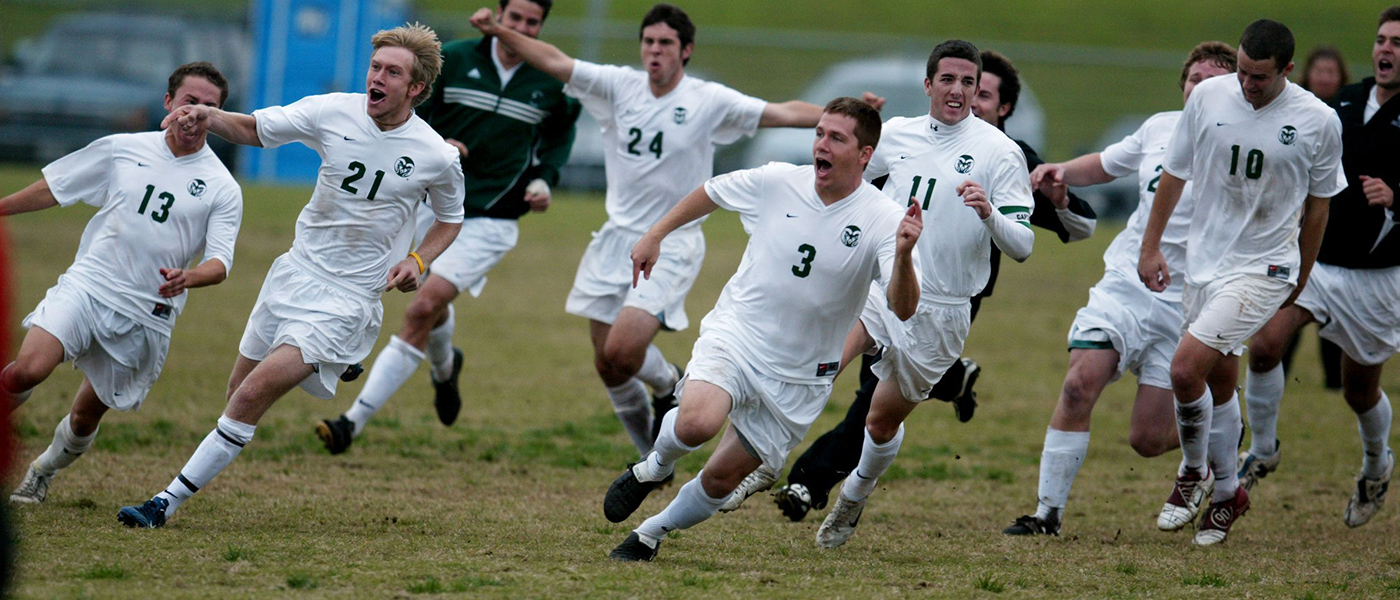
Play their hearts out—the participants
The most important aspect of any tournament is the participants. They are the lifeblood of any sporting event since they are the focal point. NIRSA tournaments strive to provide a premier experience for its players. The execution of NIRSA customer service is vital, and with the popularity of the championships it looks as if the execution has been near flawless. What are the expectations participants have with the national championships?
Laura Thomas: The National Soccer Championships is a little more unique in that the participants are club players from their institutions versus intramural teams you might see at the national basketball of flag football championships for NIRSA. There is more of an investment in their sport in terms of time, money, and competition. The participants have grown to expect a higher quality of play. I think that as you see soccer increase in popularity all over the world, we also see an increase in premier-type players and play going the club route versus the varsity route. With club, you can balance your time better, be able to take on a job, yet still build a community around your club team. I think that overall, the participants have come to expect a quality of play and tournament that is premier—and NIRSA does a great job trying to solidify sponsorships and do the little things that really enhance the experience. The players also give us awesome feedback through assessments so we can continue to improve the championship experience.

The volunteer experience
“It takes a community…” is a popular phrase that basically implies that the work and cooperation of a group is the recipe for success with any endeavor. That is no less true than with the group of NIRSA professional volunteers who have worked at the national championships year after year. Each volunteer working within their committee and across others with fluidity and energy has been a hallmark of the NIRSA Championship Series staff. What exactly is the motivational benefit and gain for its volunteers for this championship?
Danny Feitel: We try to be very intentional with how we work with our staff. We work to develop them, we mentor and provide networking opportunities for graduate assistants and young professionals with more veteran staff members who have worked the tournament for a number of years and who may be in more senior positions at their institutions versus entry level. I think we try to put them together so they can talk and create those connections that go beyond soccer so that if you have questions about stuff that goes on at your campus or how to navigate situations, you can communicate with someone you connected with and reach out so they can provide you with information.
The Championship, present day
Venues, players, volunteers, programming, the intangibles…. When all of the pieces of the championship puzzle are in place, it creates a glorious landscape. Over time, the national championships has changed and grown as more individuals have come to realize the value of the event. As the tournament has aged, what has the event grown into and what has evolved out of it?
Chris McAlpine: I think [teams] have seen the championship grow and our seriousness with the championship grow as well. That, in turn, makes those sport club groups grow as well in the sense that we don’t see rag-tag teams show up anymore. In the past, we would have some teams roll up in t-shirts with numbers made out of tape or markers. Now it has fleshed out. Teams have their own uniforms, they travel together, they have matching bags, etc. Teams have become more unified as opposed to that rag-tag group mentioned earlier. I think elevating our work has in turn elevated the level of clubs we now see at the tournament.
Erik Jaeke: If you were to ask these players personally, I really think that the number one thing they would say is that the organization stands out. That just doesn’t exist at a lot of tournaments that they grew up attending with these club teams. When you talk about how games are scheduled, how results are put out, social media, brackets, etc.—everything like that is just so on point. A lot of that has to do with work in the past with Doug [Ewing]. And now today with folks like Danny and Chris stepping in, I think the organization itself has really stepped up over the years.
Laura Thomas: I think our reputation has become an extremely positive and powerful one. I think it’s exciting for [the teams] to come, and it’s a big deal for them to win or just to qualify. Some of the teams that have never been to our tournament and get selected for the [Open Division], they’re just elated to be there. That’s really powerful to see teams like that, or from smaller schools that may not have had the opportunity to represent themselves and their institution. It’s just energy, and teams are just so excited to be there. They’re in it for the experience, and that’s just really great. I also think that we have a great reputation with our venues. It’s obviously a big tournament, so we have needs. We need radios, golf carts, this, that, and the other. With all of the things that we need, the venues and cities are more than happy to help us. The relationships we have fostered over the years with venues and cities have allowed us to return because when they see us, they know we will take care of the tournament with very little work on their end.
Danny Feitel: I think the tournament has grown in terms of the development aspect. We look at our staff and are intentional about how we work to develop staff members by putting the volunteers into roles that allow them to succeed. Starting last year, we have taken steps to do more intentional development with student officials. We’ve looked for ways to get student officials involved as well as mentorship opportunities to help aspiring officials grow themselves and help grow their programs back on their campuses. I think the growth with the regionals and bringing them under the Championship Series and providing more support for them by standardizing the process of site selection, staff selection, and rules across the regions has occurred. It levels the playing field for all teams so they have equal opportunities to compete in the Series.
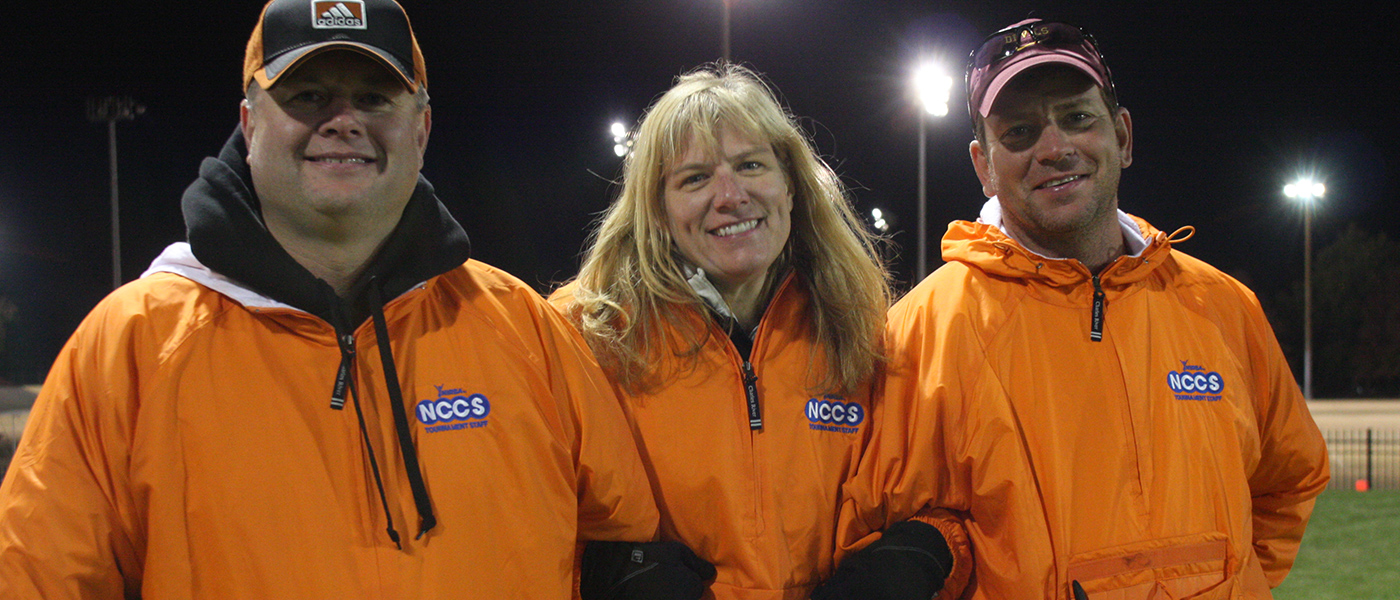
For future consideration
The tournament continues to be a smashing success. Since its humble beginnings in 1994, the NIRSA Soccer National Championships has grown into a premier event for the Championship Series. But at 25, the question now turns toward what the future holds for the tournament. What more could this tournament possibly accomplish? What will future iterations of the regional and national championships bring to its participants and volunteers?
Chris McAlpine: I think that as [the championship] grows, we will continue to make the regionals very similar, with similar qualifications and league structures and allocation of bids. Making this uniform will in turn benefit everybody because teams will know what to expect, and everyone will have a similar experience and be familiar with the national championship once they reach that level. The regionals will look like the national championship in terms of structure, just with more teams and on a grander scale. I think we are also making a push to younger, better officials to help grow them in line with NIRSA’s mission with student and individual development. We hope to see that filter down to the regional level as well.
Erik Jaeke: I think that with our current level and numbers of teams, it’s hard to have the conversation of “Can we add more teams?” with a discussion about facilities and venues. But I do think that the tournament can and will continue to grow in a couple of different ways. I think NIRSA has done a great job over the last couple of years publicizing the open lottery. As more teams participate, we’ll see a greater parity in the championship, so I think that will continue. I think that the work that NIRSA has done with the Special Olympics and Unified Sports will bring in some Unified teams and be able to provide them with tournament experience. There has been talk about brining student officials to the national championship, and maybe have them come in and officiate that tournament and also see what that national championship feel can be like.
Laura Thomas: I think that we do a great job with taking feedback from the participants, fans, parents, and try and incorporate it into future tournaments. We want to make sure that teams leave with a positive experience from us, and having that culture is also really powerful. If we see themes from that feedback we have vetted, we make changes for future championships. I see us continuing to strengthen that and keeping the participant experience a priority so that fans, family, participants, staff, and officials continue to leave not just content, but highly satisfied with their experience.
Danny Feitel: I think we are in a great place right now. I think our areas of growth right now are continued student development, especially on the officials’ side. I think we are doing some great things with having spring tournaments and student official development opportunities there. I would say our next steps are trying to create that type of program across the country so those student officials have the same opportunities as other officials in our Championship Series.

Silver and Gold: enjoy the beauty!
As the 25th Annual NIRSA National Soccer Championships get underway, we invite you all to come and enjoy the fruits of labor provided by our volunteers and teams. Whether it be the amazing talent on display shown by our participants, or the attention to detail and customer service shown by the volunteers, any attendee of the national championships can see that passion and dynamism have been put into the product. We thank all of our supporters, past and present, who have cared enough to lend their time and talents to make this event one that etches itself into the minds of those who appreciate the beautiful sport of soccer and the behind-the-scenes efforts. This may be our silver anniversary, but after 25 years, we hope you can see why the NIRSA National Soccer Championships is the gold standard of excellence.
- For more information, please contact NIRSA Director of National Sport Programs Valerie McCutchan.
Scott Flickinger is currently the Director of Campus Recreation at SUNY Cortland and the Chair of the NIRSA Member Network; you can email him at scott.flickinger@cortland.edu.




